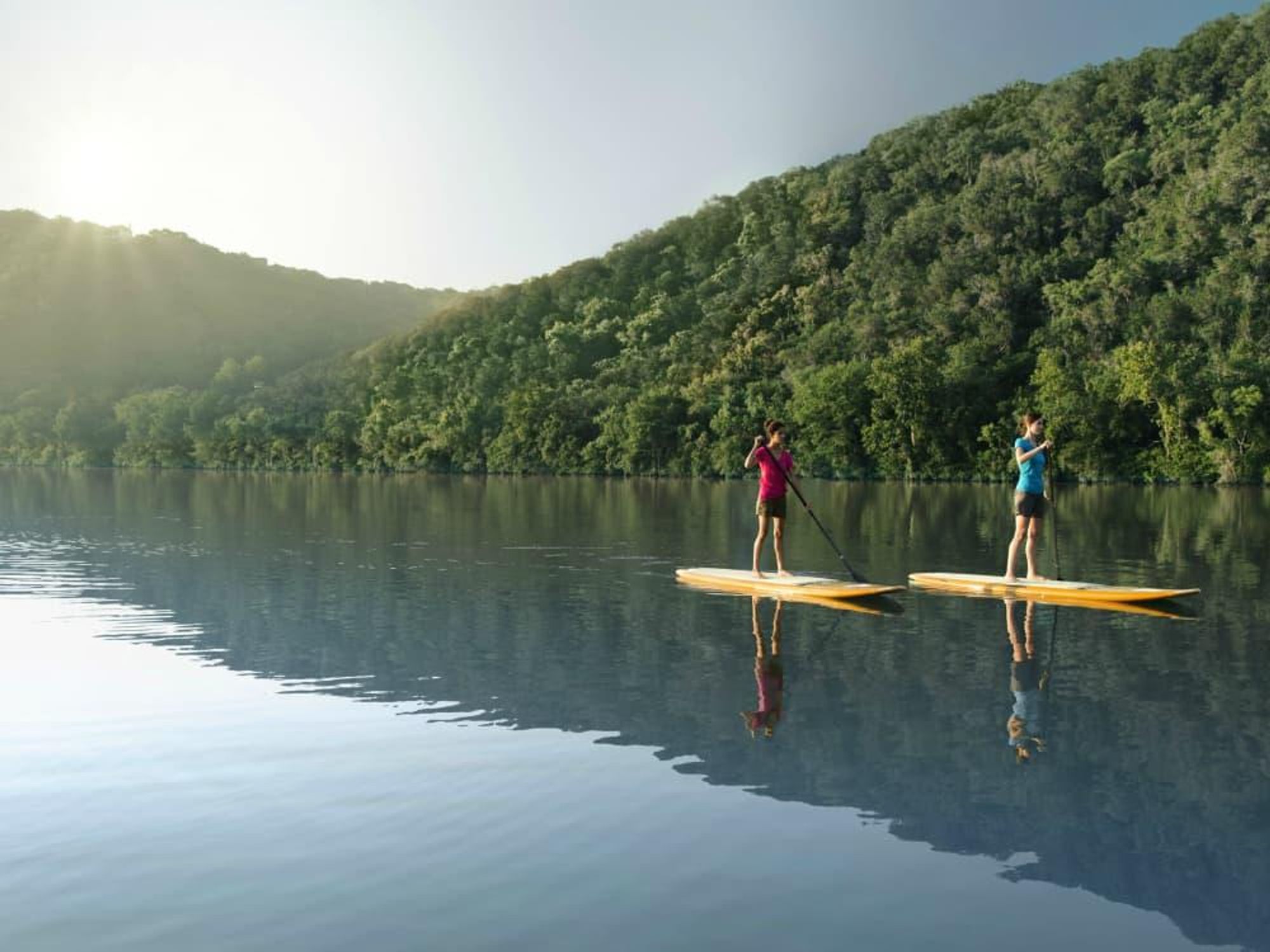History of Austin
The splashy history of Austin's famous lakes and waterways

Austin is ideally situated on both sides of the Colorado River and surrounded by many man-made lakes. These lakes, formed by area dams, have created seven Central Texas reservoirs: Lady Bird Lake, Lake Austin, Lake Travis, Lake LBJ, Inks Lake, Lake Buchanan, and Lake Marble Falls.
Before it was renamed for the city, Lake Austin was named Lake McDonald after John McDonald, a former Austin mayor. (He held the position from 1890-1895.) Lake McDonald was filled with riverboats and locals, who flocked to the water seeking relief from the heat.
Austin was flourishing in the late 1800s, and Mayor McDonald was a staunch advocate of building a dam within the city limits to promote Austin as an industrial city on the rise. Soon afterwards, Lake McDonald evaporated, and the poorly constructed dam collapsed. Today, remnants from the accident (known as the Great Granite Dam failure, which killed multiple people) can be found scattered near Red Bud Isle.
A new dam was ultimately built in 1940 (named for then-Mayor Tom Miller and built near Mount Bonnell in West Austin), and Lake Travis was created in 1942 when Mansfield Dam was established. Town Lake, now renamed Lady Bird Lake, was formed in 1960 when Longhorn Dam was constructed.
The New Deal ushers in a new era for Austin
President Franklin D. Roosevelt passed the New Deal during the Great Depression as a way to stimulate the country's stalled economy. Fortunately, the state of Texas and the city of Austin were major beneficiaries of this project.
Austin benefited from several major construction projects implemented by the Civilian Conservation Corps, including Zilker Park, Emma Long Metropolitan Park (then known as City Park), Buchanan Dam (named after Congressman James "Buck" Buchanan), and Tom Miller Dam.
The dams were created foremost to prevent flooding, provide hydroelectricity, and keep power generating in times of emergencies. Later, the reservoir areas served as recreational areas for boaters, skiers, swimmers, picnickers, campers, and even zip-liners.
The federal government ultimately spent $1.4 billion in Texas (quite a substantial amount at the time), more than any other state with the exception of New York, Pennsylvania, and Illinois. (At the time, those states had much larger populations than Texas.)
Texas lakes
There are 188 major lakes in Texas, filling over 32 million acres of land. Today, all of the major lakes in the state are man-made, with the exception of Caddo Lake on the Texas-Louisiana border. Native Americans inhabited the area on December 29, 1845, when Caddo Lake was created by a log jam. It's the largest freshwater lake in the Southern U.S. and has the largest cypress groves in the world.
Constant-level lakes versus variable-level lakes is a topic of much discussion in Central Texas. Lakes maintaining the same water level at all times (like Lady Bird Lake and Lake Austin) are known as constant-level lakes. And the monitoring of these levels is done locally by the Lower Colorado River Authority on Lake Austin Boulevard.
Area lakes that are subject to the ebb and flow of periodic flooding and drought conditions include Lake Travis. These episodes of extreme fluctuations can occur within a short time and affect property values in the surrounding area.
Colorado River
Spanning 1,450 miles, the Colorado River flows across the Rocky Mountains, beginning in California and winding through Colorado, New Mexico, and Utah. Spanning six states in the U.S. and two states in Mexico, the Colorado runs through 11 national parks — including the Grand Canyon — and is the fifth longest river in the country.
In Texas, the Colorado River (the word Colorado is Spanish for red) spans 862 miles and runs in a southeasterly direction from Lubbock, winding through Austin, and leading to Matagorda Bay on the Gulf of Mexico. The river is a major source of water for Texas cities, rural farms, and provides electrical power for state residents.
The most critical resource in Texas
Although Texas is known around the world for oil and gas production, water is Texas' most precious commodity. The Texas Water Development Board is a state agency that oversees and educates the public about the role water plays in the everyday life of Texans.
The agency is guided by these words: "Water is essential for Texas communities to grow and thrive. It quenches our thirst, nourishes our agriculture, and drives our thriving economy. Water is — and always will be — Texas' most important resource."
